Table Of Contents

Onkar Sumant

Koyel Ghosh
ICT Domain: A Quick Look at the Top 5 Emerging Markets in Q2 2025

The growing investments in information communication technologies by multinational private companies have boosted the revenue share of the ICT domain in the past few years. Additionally, the advent of Artificial Intelligence, machine learning, data analytics, and blockchain has impacted the sector positively. Moreover, many governments in developing countries like India, Brazil, China, etc., have started using the Internet and digital technologies to deliver services to their citizens, even those living in remote villages and towns. In addition, the launch of 5G technologies in various nations around the world has expanded the scope of the landscape in recent times. Apart from this, certain markets contributed to the growth of this domain in the second quarter of 2025. This newsletter explores the various factors influencing the rise of these industries and highlights the evolving dynamics of the domain comprehensively.
In-App Advertising Market
In-app advertising is a modern marketing strategy that involves featuring paid advertisements within smartphone mobile applications. It provides a revenue stream for companies as they can monetize their ads without charging mobile app users. At the same time, it helps businesses opt for a targeted approach to reach their audience, thus expanding their consumer base in the long run. The growing use of machine learning algorithms and natural language processing techniques has enabled software companies to design personalized ads based on the users' behavioral patterns, preferences, transaction history, etc. This has increased ad efficiency and conversion rates drastically, thus enhancing the overall profitability of the company.
The in-app advertising industry witnessed significant growth in the second quarter of 2025 and is anticipated to dominate the ICT domain in the coming period. The rising utilization of smartphones and tablets across the globe has played an important role in the growth of the market. Moreover, the growing use of social media platforms and online gaming applications has led to an increase in the adoption of this novel marketing approach by IT companies. Additionally, the emergence of advertising automation is expected to boost the revenue share of the industry in recent times.
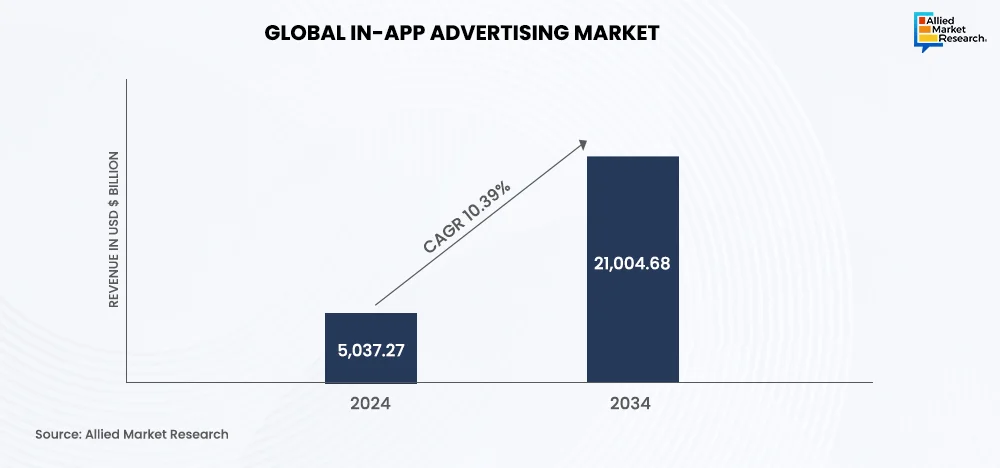
Computational Fluid Dynamics (CFD) Market
Computational fluid dynamics is a branch of fluid mechanics that involves the use of software applications and numerical analysis methods to study the physical flow of fluids. Designing data structures and simulations to solve different equations related to heat transfers, flow velocity, etc., is an essential component of computational fluid dynamics. CFD software programs are widely used in various end-use industries such as automotive manufacturing, aerospace and defense, manufacturing, and chemical processing. The computational fluid dynamics (CFD) industry accounted for $2.6 billion in 2023 and is predicted to reach a sum of $5.3 billion by 2033, rising at a CAGR of 7.2% during 2024-2032.
The AMR report also provides an in-depth analysis of the performance of the sector in various regions across the globe, including North America, LAMEA, Europe, and Asia-Pacific. The administrative, demographic, political, legal, socioeconomic, and cultural factors impacting the sector are studied as part of this study. The North America region has held a huge market share in the last few years and is anticipated to dominate the industry in the coming period. The growing investments in advanced computational technologies improved the growth rate of the sector in Q2 2025.
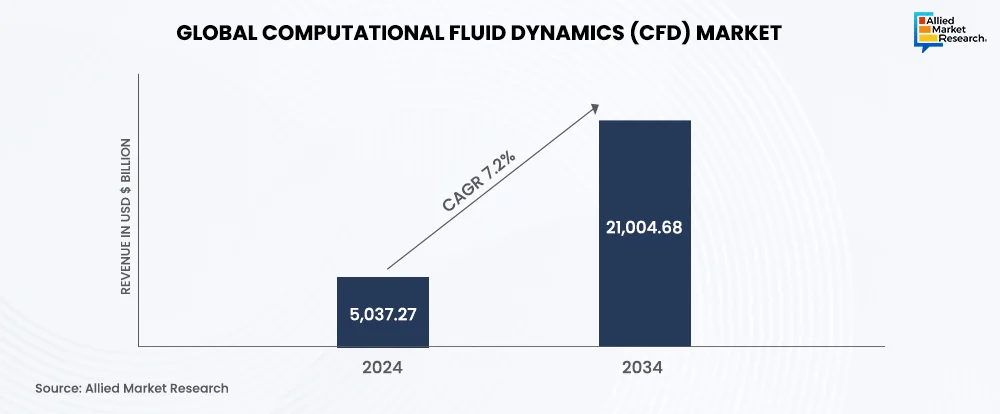
HealthTech Market
HealthTech is a broad term that refers to the use of digital technologies and advanced solutions to improve medical outcomes of patients at all levels of diagnosis, treatment, and rehabilitation. The use of smart wearables, electronic health records, telehealth systems, and other apps is, thus, a part of the HealthTech approach. The industry was valued at $908.5 billion in 2023 and is anticipated to generate a revenue of $3,140.9 billion by 2033, citing a CAGR of 13.1% during 2024-2033. The awareness regarding the importance of health, nutrition, and well-being has increased drastically in the post-pandemic period, which is expected to create favorable conditions for the growth of the market in the coming period.
The AMR report classifies the industry into various segments based on component, end users, and technology. By component, the hardware segment held the highest revenue share and is projected to dominate the landscape in the near future. The increasing adoption of remote monitoring devices by doctors across the globe to assess the medical condition of their patients strengthened the position of the market in Q2 2025. Additionally, the rising prevalence of chronic disorders such as cardiovascular ailments, respiratory disorders, and lifestyle diseases is anticipated to boost the growth of the industry.
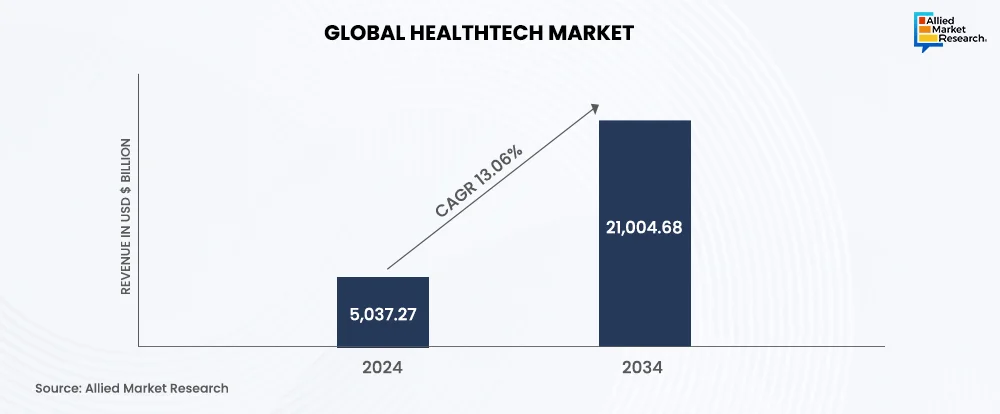
Speech-to-Text API Market
Speech-to-Text API is an application programming interface that helps developers convert spoken voice messages into a text format. These solutions allow users to send their audio data to the program, which then returns the entire message as a written transcription. Almost all modern digital devices, such as smartphones, laptops, tablets, etc., support speech-to-text APIs, thus making them a common feature in today’s world. In the last few years, this technology has been increasingly used in the education sector to teach physically disabled children efficiently. The rising use of these applications in schools, colleges, and universities is anticipated to help the speech-to-text API market gather a revenue of $21 billion by 2034. The market accounted for $5 billion in 2024 and is expected to rise at a CAGR of 15.2% during 2025-2034.
Along with this, the increasing integration of Artificial Intelligence in speech-to-text APIs is anticipated to open new avenues for investments in the landscape. In addition, technological advancements in natural language processing are anticipated to accelerate sectoral growth in the near future. Moreover, the surge in demand for smart home appliances has impacted the industry positively. Additionally, innovations in cloud computing and data analytics are expected to expand the scope of the market.
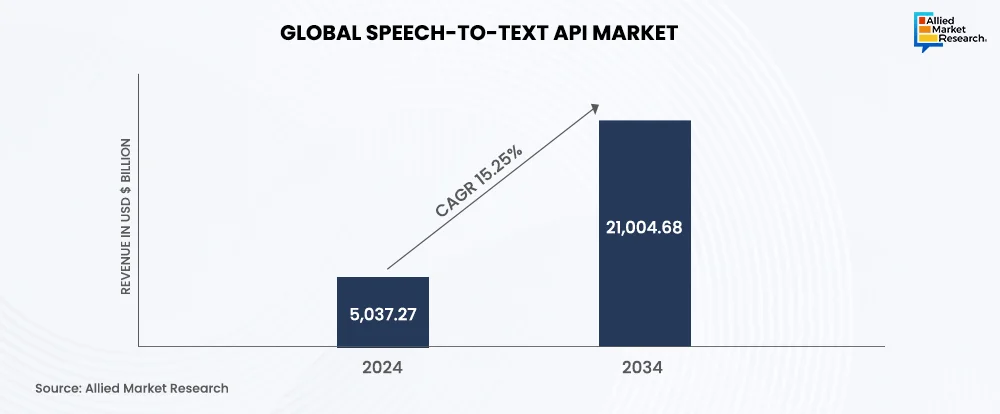
Remote Working Software Market
The remote working software market accounted for $23.2 billion in 2023 and is anticipated to gather a revenue share of $127.8 billion by 2033, growing at a CAGR of 17.8% during 2024-2033. Remote working software programs are a set of digital tools and technologies that enable employees to work from remote locations. These solutions include project management applications, cloud-storage databases, communication and collaboration software, etc., which aid workers in adopting a more flexible approach. The gradual shift of IT companies toward cloud computing is anticipated to strengthen the position of the industry in the coming period.
The AMR report offers a detailed analysis of various segments of the landscape based on component, deployment mode, enterprise size, end user, and age demographics. Based on the component segment, the solution segment is expected to witness significant growth in the next few years due to the growing investments in various remote working software applications. Additionally, the Europe region is anticipated to grow rapidly owing to the growing emphasis on digital infrastructure development in various countries.
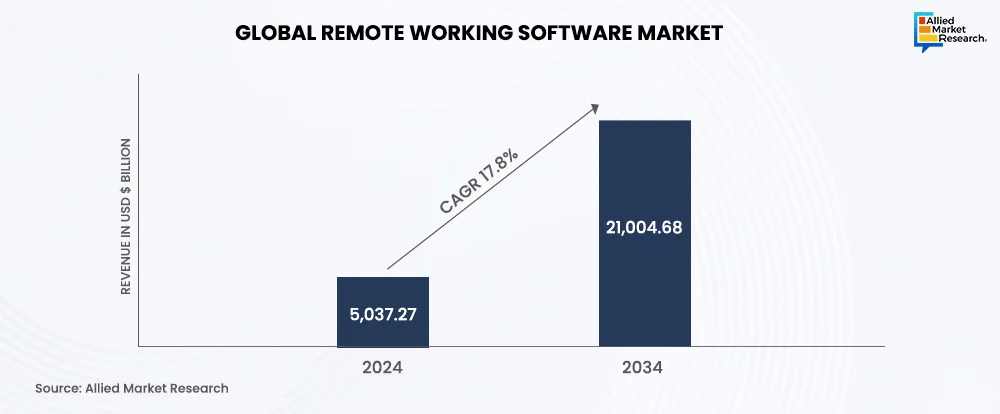
The final word
The ICT domain held a dominant position in the global economy in the last few years and is expected to accelerate its growth rate in the future. The advent of AI, blockchain, and other advanced technologies has broadened the scope of the sector and has brought numerous lucrative opportunities in the industry. In addition, the growing pace of Internet penetration in various countries is anticipated to increase the footprint of the landscape across the globe in the coming period. Moreover, the contribution of different markets to the expansion of the domain in the second quarter has transformed its operational dynamics, thus opening new avenues for growth.
To understand the different trends and advancements in the ICT domain holistically, contact our experts.

